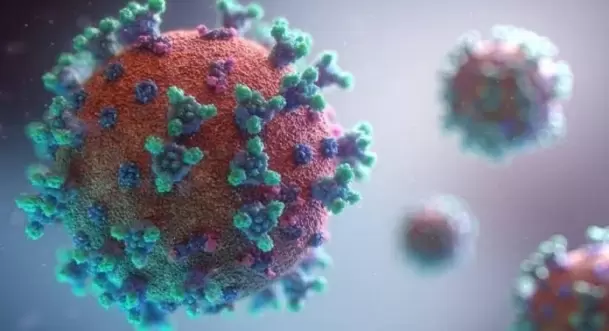Decoded: What causes Covid-19 mortality
New York
25-August-2021

Photo:IANS
A team of researchers has identified what may be the key molecular mechanism responsible for Covid-19 mortality -- an enzyme related to neurotoxins found in rattlesnake venom.
The enzyme, secreted phospholipase A2 group IIA, or sPLA2-IIA, has long been known to play a critical role in defense against bacterial infections, destroying microbial cell membranes.
Most healthy individuals have circulating levels of the sPLA2-IIA enzyme hovering around half a nanogram per milliliter.
But, Covid-19 was lethal in 63 per cent of patients who had severe Covid-19 and levels of sPLA2-IIA equal to or greater than 10 nanograms per millilitres, the study showed.
The enzyme tries to kill the virus, but at a certain point when it is released in such high amounts, it destroys the patient's cell membranes, contributing to multiple organ failure and death.
The findings could provide a new therapeutic target to reduce Covid-19 mortality, according to the study published in the Journal of Clinical Investigation.
"Many patients who died from Covid-19 had some of the highest levels of this enzyme that have ever been reported," said Floyd (Ski) Chilton, from Arizona University's College of Agriculture and Life Sciences.
Watch This TWL Video
When the activated enzyme circulates at high levels, it has the capacity to "shred" the membranes of vital organs, Chilton said, adding that "it's a bell-shaped curve of disease resistance versus host tolerance".
The team collected stored plasma samples and went to work analysing medical charts and tracking down critical clinical data from 127 patients hospitalised at Stony Brook University between January and July 2020.
A second independent cohort included a mix of 154 patient samples collected from Stony Brook and Banner University Medical Center in Tucson between January and November 2020.
Previous research has shown how the enzyme destroys microbial cell membranes in bacterial infections, as well as its similar genetic ancestry with a key enzyme found in snake venom.
The protein "shares a high sequence homology to the active enzyme in rattlesnake venom and, like venom coursing through the body, it has the capacity to bind to receptors at neuromuscular junctions and potentially disable the function of these muscles", Chilton said.
The team also suspects the enzyme's role in people suffering from long Covid.-IANS
More Headlines
Conspiracy Underway To Remove Nitish Kumar, Claims Mukesh Sahani
‘Something Wrong’: SC Questions Madras HC’s Handling of Karur Stampede Case
Sir In Bengal: Eci Identifies 58 Lakh Excludable Voters After Enumeration Phase Ends
Shivakumar Defends Hate Speech Bill, Accuses BJP Of Spreading Division, Hatred Among People
Opposition Moves to Impeach Justice G R Swaminathan; Kanimozhi Cites Loss of Public Trust
Conspiracy Underway To Remove Nitish Kumar, Claims Mukesh Sahani
‘Something Wrong’: SC Questions Madras HC’s Handling of Karur Stampede Case
Sir In Bengal: Eci Identifies 58 Lakh Excludable Voters After Enumeration Phase Ends
Shivakumar Defends Hate Speech Bill, Accuses BJP Of Spreading Division, Hatred Among People
Opposition Moves to Impeach Justice G R Swaminathan; Kanimozhi Cites Loss of Public Trust









